(Click on any image to view it in high resolution.)
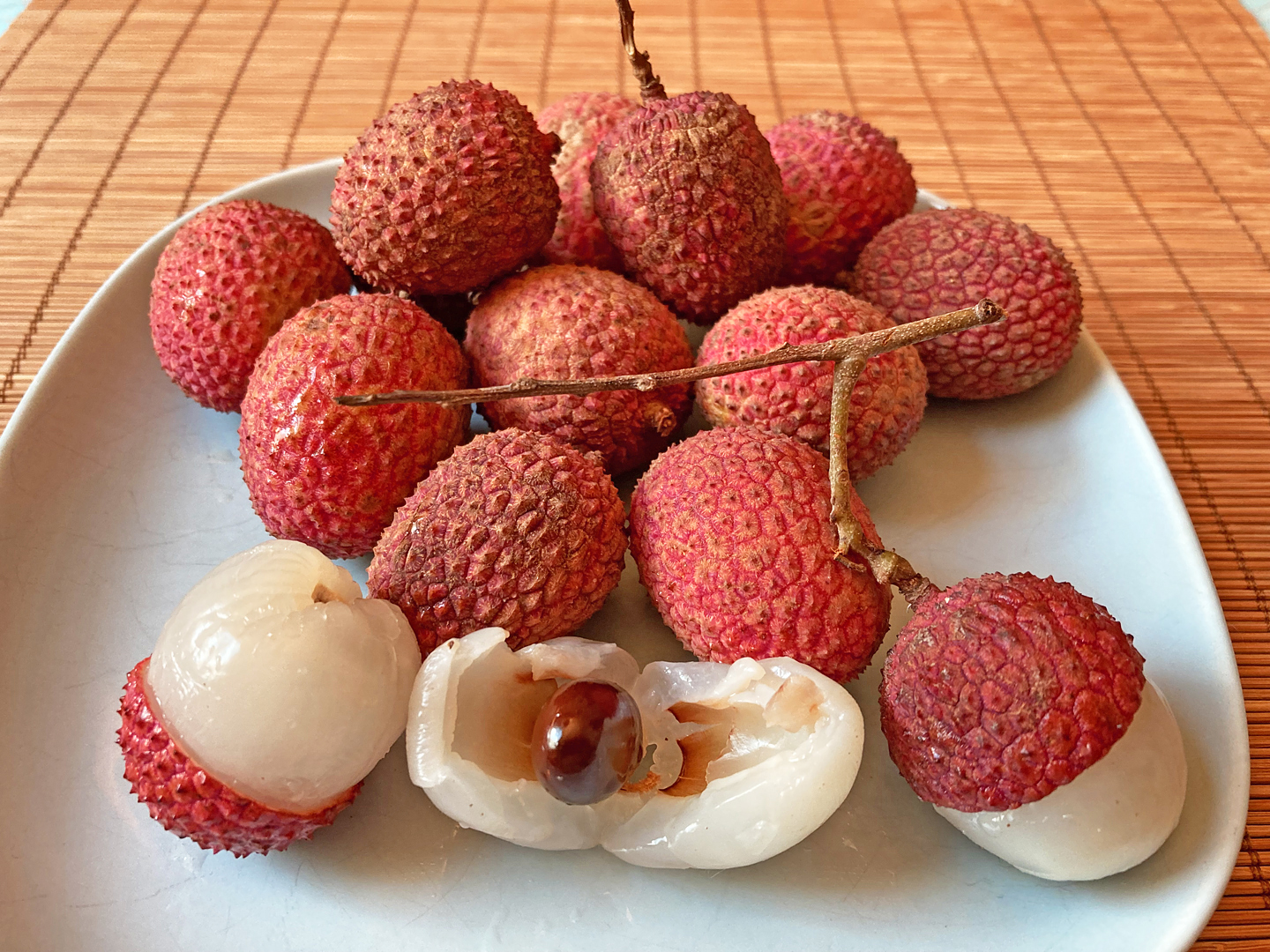
About two weeks ago, I was discussing the ins and outs of selecting fresh lychees with one of my delightful ethnojunket guests.
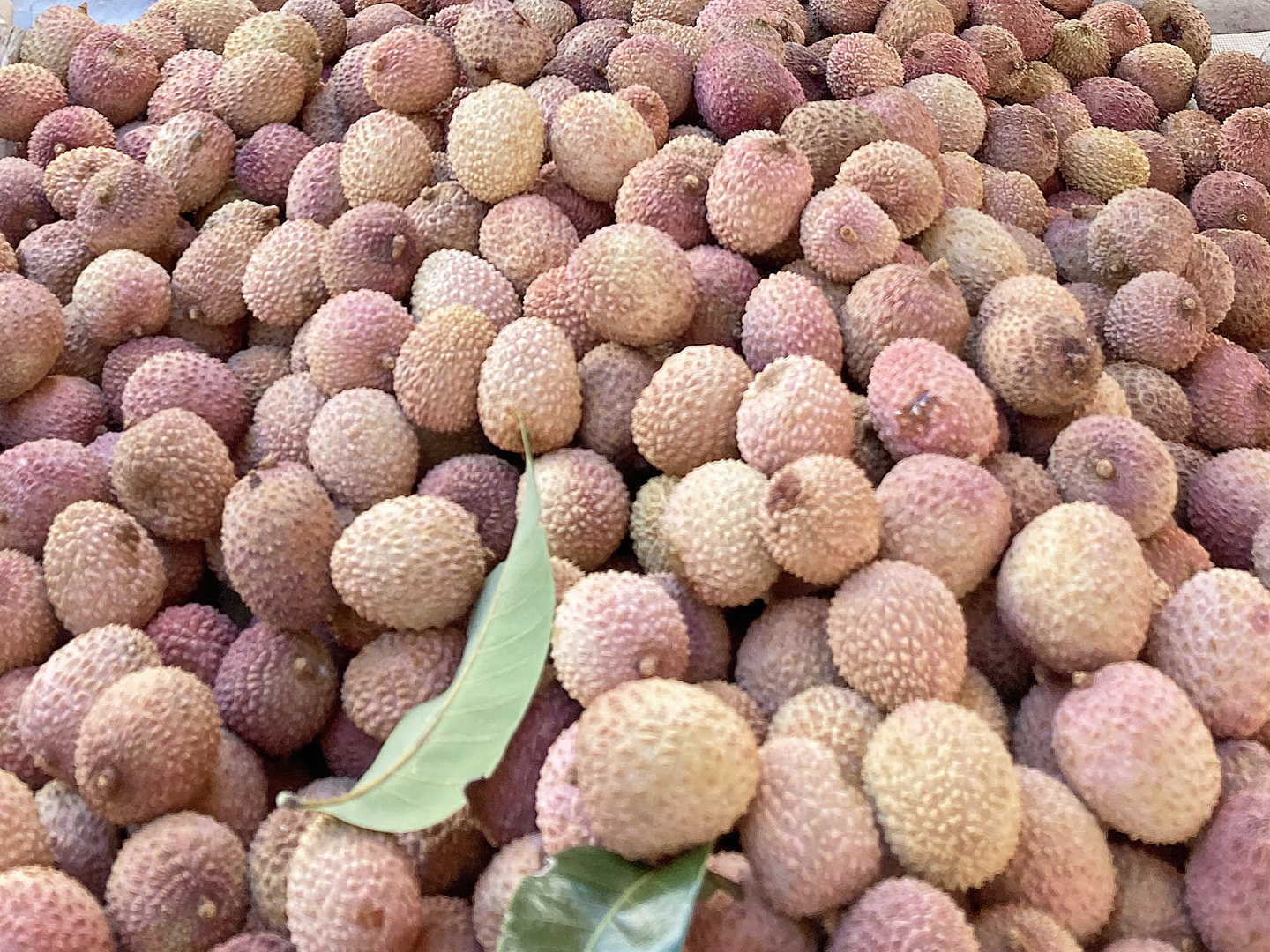
We were in a market that had a pile of lychees on display that looked faded, for lack of a better word, and I suggested that, although it’s not foolproof, deep red lychees would probably be a better choice. We weren’t in Chinatown, however, so that was the only offering.
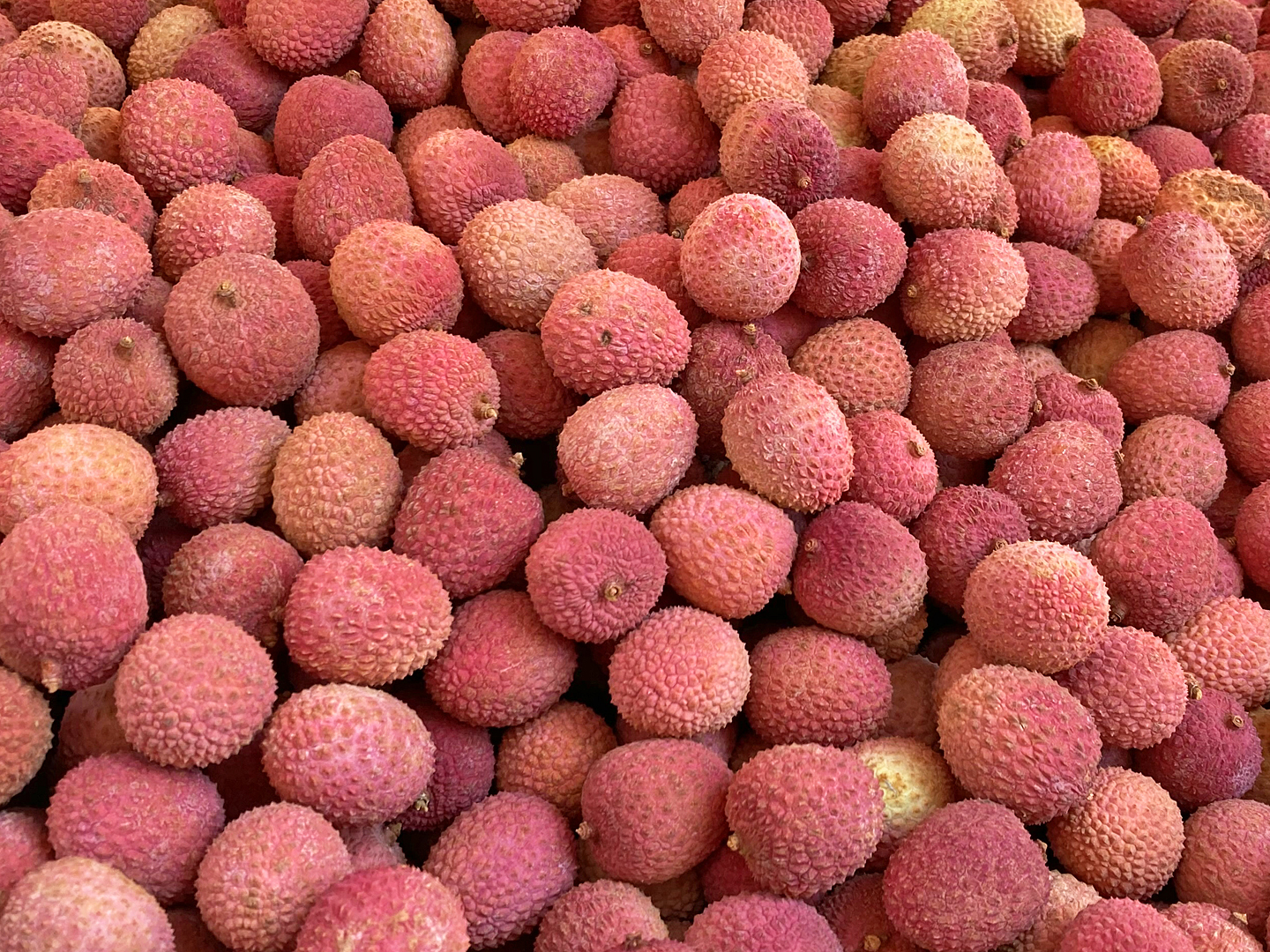
But this time of year in Chinatown, every street vendor will present multiple options and it’s a safe bet that at any given stand, price will be an indicator of quality. Pallid, less expensive lychees just can’t compete against those selling at three pounds for $10 (or $4/lb) – and that’s certainly a reasonable price for a sack of summertime sweetness.
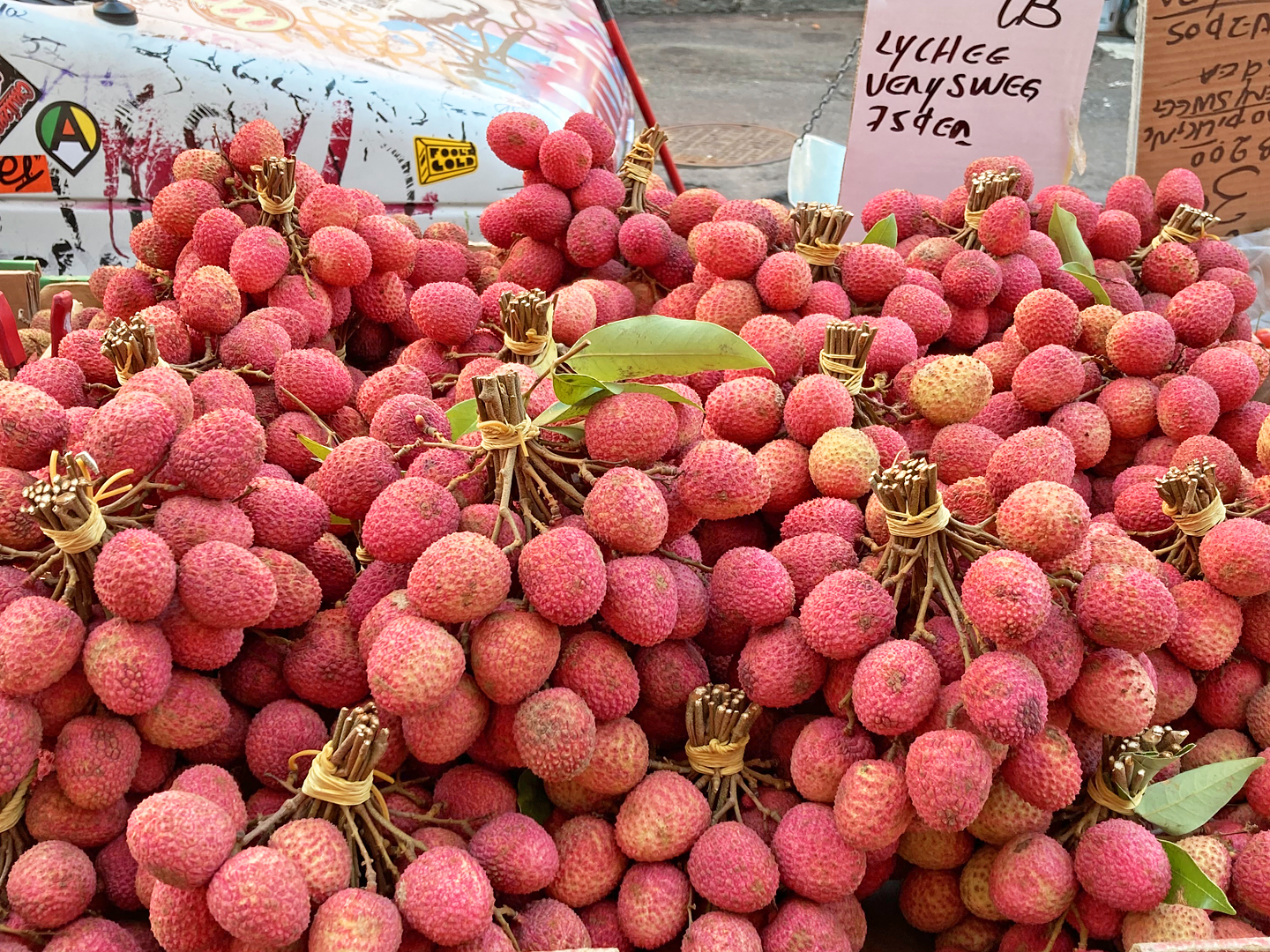
Now let’s dig a little deeper: lychees that are still clinging to their stem will be fresher and juicier than loosies that have gone rogue.
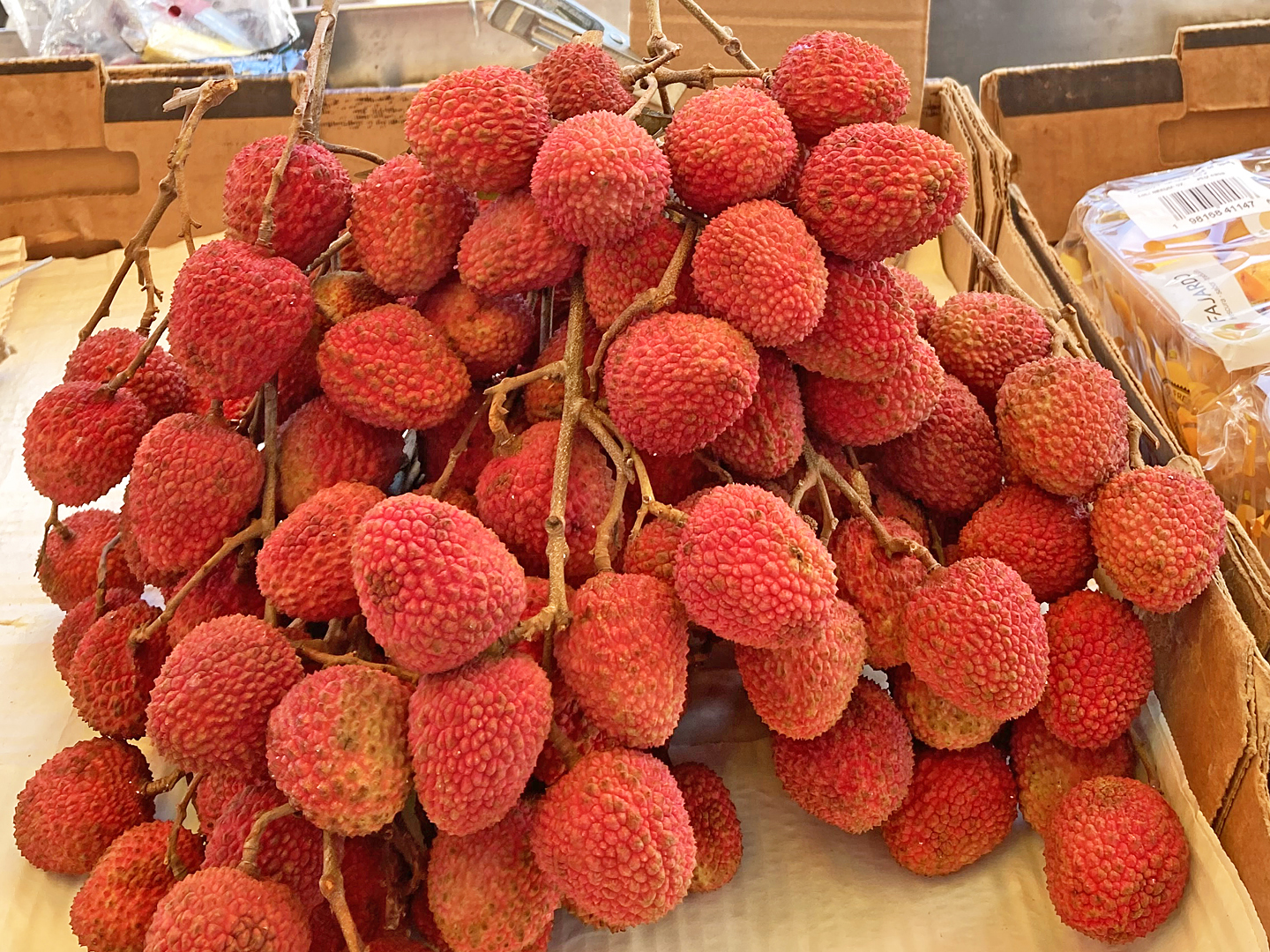
And then you might spot some bright red beauties for $10/lb and their ostensibly identical bright red neighbors at $20/lb both attached to their stems. The difference, although not always clearly noted on the sign, is the size of the seed – and size matters! Smaller seeds (known as “chicken tongue”) yield more fruit inside the thin, textured shell so what appears to be a steeper price evens out when you take into consideration the amount of actual fruit per lychee – not to mention that this variety excels in sweetness.
My vendor of choice is Muoi Truong who has held court at the southeast corner of Canal and Mulberry for over 25 years (as long as I’ve been going there). Top notch produce at competitive prices – and she never fails to greet me when I arrive!
It’s said that New York City boasts at least nine Chinatowns (and perhaps a few more depending upon your definition of what constitutes a Chinatown) and since most specialty fruits are coming into season, this is the perfect time to visit one of them.
More to come….

Yum, I love lychees !